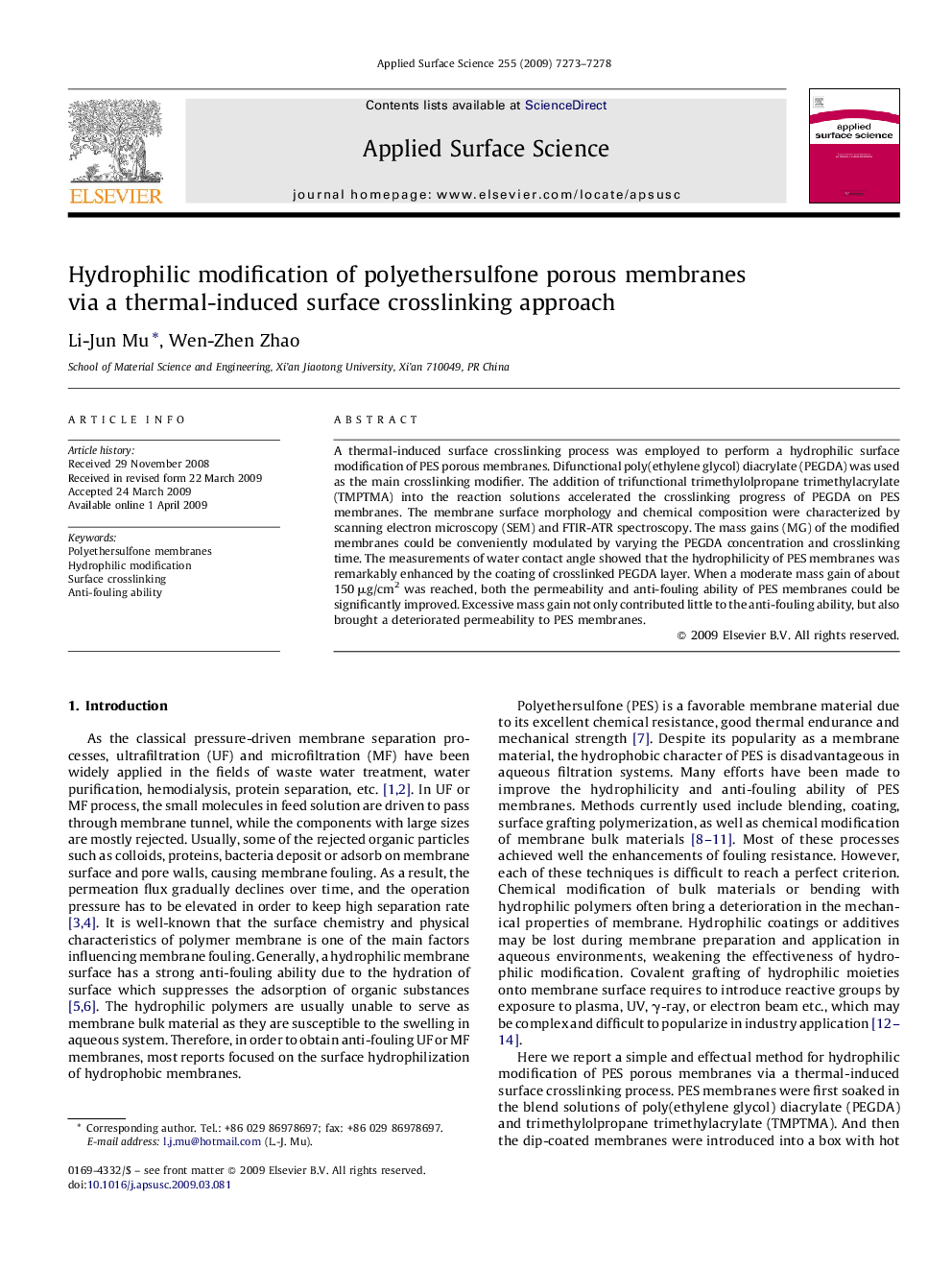| Article ID | Journal | Published Year | Pages | File Type |
|---|---|---|---|---|
| 5367052 | Applied Surface Science | 2009 | 6 Pages |
A thermal-induced surface crosslinking process was employed to perform a hydrophilic surface modification of PES porous membranes. Difunctional poly(ethylene glycol) diacrylate (PEGDA) was used as the main crosslinking modifier. The addition of trifunctional trimethylolpropane trimethylacrylate (TMPTMA) into the reaction solutions accelerated the crosslinking progress of PEGDA on PES membranes. The membrane surface morphology and chemical composition were characterized by scanning electron microscopy (SEM) and FTIR-ATR spectroscopy. The mass gains (MG) of the modified membranes could be conveniently modulated by varying the PEGDA concentration and crosslinking time. The measurements of water contact angle showed that the hydrophilicity of PES membranes was remarkably enhanced by the coating of crosslinked PEGDA layer. When a moderate mass gain of about 150 μg/cm2 was reached, both the permeability and anti-fouling ability of PES membranes could be significantly improved. Excessive mass gain not only contributed little to the anti-fouling ability, but also brought a deteriorated permeability to PES membranes.
